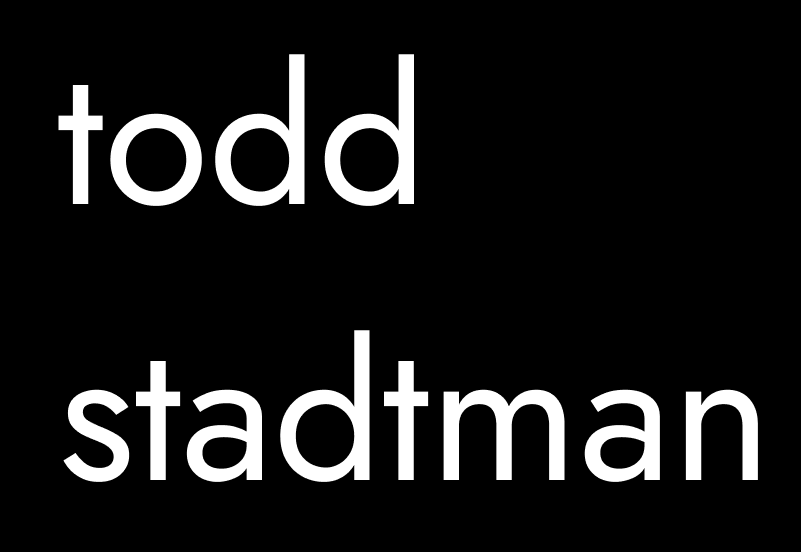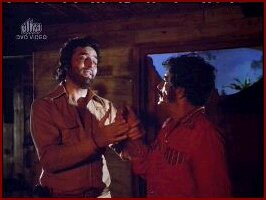|
Kaala Sona
Kaala Sona is another example of the Basmati Western, that Bollywood take on the Western that seems to draw more on the European model than the American for its inspiration. Of course, the Amitabh Bachchan classic Sholay, released at roughly the same time, is considered the gold standard of that genre, and Kaala Sona follows along much the same pattern. Like Sholay, for instance, it's a Western in feel rather than period, setting its action in the present day while taking advantage of some of the still relatively untamed regions lying within India's borders. Such an approach allows both films to highlight a favorite Bollywood theme: the urbanized ne'er-do-well who, in being called upon to defend a rural community from a destructive outside force, has his soul awakened to the simple and essential virtues embodied by that community. (In more recent films, that urbanized ne'er-do-well tends to be, more specifically, a Westernized product of the Diaspora, but same idea.) This is not to say that the change we see in Rakesh, Kaala Sona's protagonist, is a particularly gradual or subtle one. In fact, even given the tendency of characters in Bollywood films to go through some jarringly abrupt changes of heart, Rakesh appears to take a particularly fast track in negotiating his character arc. When we first meet him, at the film's opening, he is a shiftless playboy, waking up in his spectacularly hideous penthouse bachelor pad for another busy day of fending off the many gold-digging hoochies who are after his vast inherited fortune. This agenda has to be abruptly set aside, however, when Rakesh receives a telegram from an old family servant, summoning Rakesh to his deathbed. Rakesh makes haste to the servant's side, at which point the servant breaks the news that Rakesh's father, a land developer long thought to have died in an accident, was actually murdered by the notorious bandit Poppy Singh, and that Poppy Singh, long thought to have died himself, is actually alive and well and hiding out in a remote, mountainous region near the country's border. In the blink of an eye, Rakesh is storming the territories with gun in hand. Without the benefit of a training montage or flashback to explain his prowess, we see that, despite his pampered upbringing, Rakesh is not only very good with his fists, but also a lighting fast draw and expert marksman. These skills serve him well, as he is able to quickly and effortlessly dispatch a number of the professional gunmen who are guarding the region's perimeter. Cue the opening credits.
That Rakesh is more convincing as a rugged man of action than as an effete member of the leisure class is not all that surprising, given that he is played by Feroz Khan. Thanks to my exposure to Khan in 1980's Qurbani - and now Kaala Sona - I've come to the conclusion that his filmography is one I definitely need to delve into further. Both films bear the stamp of, if not a great actor, then at least a very distinctive presence. Khan, in addition to being its star, was also the director of the sublimely over-the-top Qurbani and, while Kaala Sona (which was directed by Ravikand Nagaich) doesn't go quite as far, it has a similar feeling of raw pulp vitality and absurdly overheated machismo. It doesn't stray too far from the normal Bollywood conventions - and all of the exuberant trappings that they entail - but it clearly has a violent B movie heart beating within it, which makes for a pretty entertaining - and, at times hallucinatory - combination. After his guns-blazing entry within its borders, Rakesh finds the entirety of the lush valley region locked in the stranglehold of the mysterious Popy Singh. Only the estate of the kindly Thakur Ratansing appears to offer any kind of oasis of relative calm, until Rakesh discovers that the Thakur and his family, too, have reluctantly come under the bandit's sway. The Thakur's young son (who looks suspiciously like Weng Weng, the diminutive star of the trashtastic Filipino opus For Y'ur Height Only) has been kidnapped by Poppy Singh and his men and, in order to insure the boy's safety, the thakur's eldest daughter, Durga (Parveen Babi), has been forced to assist in smuggling the opium produced by the gang out of the region. That opium is harvested and refined - using the local residents as slave labor - within Popy Singh's virtually impenetrable compound, located high in the mountains across a yawning, unbridge ravine.
Rakesh soon meets up with a vigilante band dedicated to defeating Poppy Singh. Their leader is a strapping young buck named Shera, who is played by Danny Denzongpa, an actor of Nepalese heritage. The filmmakers capitalize on Denzongpa's exotic looks by making Shera Kaala Sona's resident version of a Hollywood-style Native American, complete with buckskin, fringe and beaded headband. It's a touch that doesn't make a lot of sense if you think about it, but serves to enhance the films' Western movie feel, which undoubtedly took priority over any concerns of authenticity on the part of the producers. In any case, the character of Shera, in addition to providing an opportunity for lots of scenes of male bonding with Rakesh, serves nicely as a love match for the Thakur's youngest daughter, which, once Rakesh and Durga are established as an item, makes for double the normal amount of courtship themed musical numbers. It is also Shera's eventual predicament at the hands of Popy Singh that emboldens Rakesh to single-handedly breach the bandit's compound in an attempt to rescue him and the Thakur's son. I've written before about how Bollywood films often have a tendency to turn into entirely different movies somewhere around their second half, and, with Rakesh's entry into Poppy Singh's compound, Kaala Sona abruptly goes from being a gritty Western to something more akin to one of those surreal old Russian fantasy films. The largely location-shot natural exteriors of the first half give way to a candy-hued sound stage artificiality, including a limitless expanse of poppy fields that appear to have been imagined by someone whose only experience of poppy fields was from watching The Wizard of Oz. This "we've got some crude matte paintings and we're going to use them" visual approach carries through until the film's final action set piece, which takes place on an extraordinarily phony looking ice shelf with flappy cloth icicles hanging from it. Of course, far from hurting Kaala Sona, this trippy turn of events simply serves to make it overall a far more memorable - and awesome - viewing experience than it probably would have been otherwise.
And, of course, the evil fairyland setting of Kaala Sona's final act is governed in appropriate fashion, for Popy Singh, when we finally meet him in all his glory, is a freaky monomaniac in the classic Bollywood bad guy mold. Goateed and with one disconcerting, milky eye, he wears a jeweled headband that -- in combination with the long, straight hair that stops at his crown -- makes his bald pate look like a skull cap. Furthermore, his wardrobe is given an Eastern Asian flavor, no doubt with the intention of suggesting a sort of Fu Manchu character. Prem Chopra, the actor who plays Popy Singh, here bears a strong resemblance, in both appearance and manner, to the American actor Andrew Robinson, particularly in that actor's portrayal of the serial killer Scorpio in the original Dirty Harry. If that suggests to you that, with Popy Singh, you'll be getting some prime quality borderline-hysterical villainous ravings coupled with churlish random killings of underperforming minions, you would be right on the money. Kaala Sona features music by the legendary R.D. Burman, which makes for a lot of catchy and propulsive tunes, as well as some very enjoyable production numbers. Probably the best of these is the one set to the psychedelic-tinged Ek Bar Jaane Jaana, in which Parveen Babi appears before a bunch of drunken louts as a gyrating apparition, splitting - thanks to some simple yet effective opticals - into multiples to form a hazy chorus line of one. But the climactic number, which pairs Babi with the always welcome Helen for some frenzied hoofing, is also a visual treat. In addition to its songs, the film boasts an instrumental score complete with some amusing Bollywood flavored stabs at Morricone-style western themes - trilling, non-verbal vocalizations and all.
Having dipped into Bollywood westerns, I have to admit to not knowing just how deep the well goes. I am aware that Feroz Khan made at least one other film in the genre - Khote Sikkay, an apparent reworking of For a Few Dollars More - but, beyond Kaala Sona, Sholay and that, I don't know how many films the genre comprises. But it is to Kaala Sona's credit that I fully intend to find out. There's just something about the combination of the Western genre's Spartan, rough-hewn aesthetic with Bollywood's tendency toward the exuberant and phantasmagorical that I find hard to resist. If you want to join me in this new obsession, Kaala Sona is certainly a good place to start.
- Todd Stadtman 1/6/08
|
||
|
All text content � Copyright 2007-2008 Todd Stadtman. All rights reserved. |













